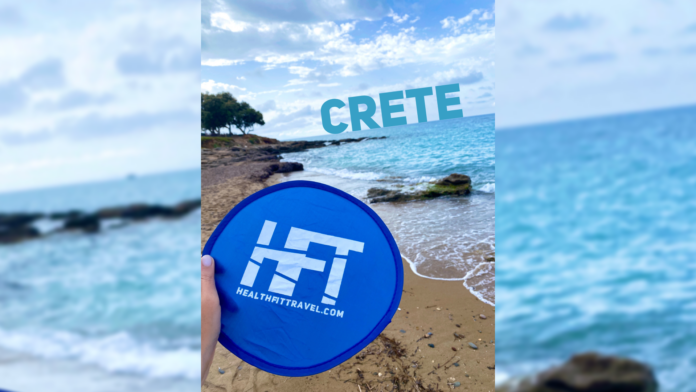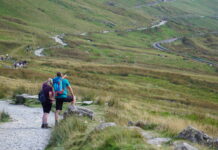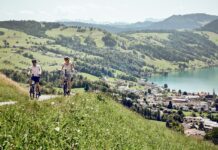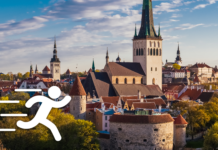There are scores of superb hiking routes on Crete. Gorges abound, offering fascinating glimpses into life through the aeons, with ancient churches, crude caves haunted by the ghosts of medieval hermits, patches of lush foliage and stark, geological beauty. We’ve compiled some of the treks we’re most excited about for you to venture out on during your next vacation or staycation.
Samaria Gorge Trek
The trip along the Samaria Gorge is the most famous of these walks, but this trail can get very crowded and is only open for a few months per year. Traverse it in safety with a professional mountain guide. The good news is there are many other excellent and uncrowded choices.
Here are favourite hiking routes in Crete from Ryan Ver Berkmoes, Lonely Planet.
Imbros Gorge
Best hike for natural beauty
8km (5 miles) one-way, 3 hours, moderate
Often compared to the famous Samaria Gorge hike, the walkthrough Imbros Gorge can be recommended entirely on its own merits. At 8km (5 miles), the walk is just under half the length of the Samaria hike, yet it still packs in plenty of natural wonders. Most importantly, it is much less crowded than its more famous counterpart.
This former mule path (which was also used by thousands of British troops evacuating Crete in 1941) is bracketed by 300m (984ft) walls lined with fig and almond trees, cypresses and oaks. At one point the sheer cliff faces are only 2m (6.5ft) apart; along the trail, an arch of stone crosses right over the path.
The Crete hiking route begins in the tiny village of Imbros, where a small market has supplies and snacks for your walk. Be sure to bring a lot of water and wear sturdy shoes as the path has many large and loose stones. The trail starts at 780m (2560ft) above sea level, and the route descends 130m (427ft) to the finish point at Komitades, which also has a small market.
From here, you can follow the narrow road 4.6km (2.9 miles) down to the small fishing village of Hora Sfakion, which has a beach, hotels, and fine tavernas.

Aradena Gorge
Best for a seaside retreat
3.5km (2.2 miles) one-way, 2 hours, moderate
The trail into the Aradena Gorge begins just before the high and rickety Vardinogiannis bridge, which draws eager bungee jumpers. After less than a kilometer, this uncrowded trail reaches the early-Byzantine Church of Agios Ioannis, where the route forks – take the trail to the east and descend through a fairly lush landscape to the endpoint, idyllic Marmara Beach. This is one of the best and most isolated beaches on the southwest coast and is lapped by waters that are an almost impossibly vibrant teal in color.
From the beach, a walk of around 4km (2.5 miles) along a scenic and easy coastal trail will take you to the delightful seaside village of Loutro. Here you’ll find places to stay, tavernas and a small pebbly beach. It’s a fine spot to settle in and enjoy the remote beauty of the coast. There is no road access, but you can catch a ferry on the Paleohora-Hora Sfakion route.
At some places in the gorge, you’ll have to scramble over large rocks; at others, you’ll find simple metal ladders to get over obstacles. Wear sturdy hiking shoes.
Agia Irini Gorge
Best for a shady hike
7.5km (4.7 miles) one-way, 3 hours, moderate
Lush vegetation and shady trees are highlights on the Agia Irini Gorge hike, which is blissfully unvisited. As you descend, look for small caves dotting the cliff walls. The air is redolent with the scent of wild herbs for much of the year – just smell the sage in summer! There are many sublime spots where you can enjoy a picnic under a tree with the sound of babbling water.
Descending 500m (1640ft), the trail is unchallenging for most active people, although you will have to clamber over boulders at times. There is plenty of shade along the route and the path is well-maintained. In spring, the river can rise and wash out parts of the trail, which raises the overall rating to difficult.
The Agia Irini Gorge is open year-round, and the trail starts just below its namesake village. The end-point is some 7km (4.4 miles) from the waterfront village of Sougia along a sun-drenched but mostly traffic-free road. The taverna at the end of the trail is a good place for a break and you can get a taxi from here.
Agiofarango Gorge
Best hike for beach lovers.
7km (4.4 miles) one-way, 3 hours, moderate
A hassle-free hike down the gentle slope of a dry river bed, the Agiofarango Gorge trail ends at one of southern Crete’s most beautiful – and isolated – beaches. There are soaring rock formations and the snorkelling is excellent in this sheltered cove.
The trail begins at Moni Odigitrias, a compact and intriguing monastery, which has an old defensive tower you can climb for superb views. From April to August the route is awash with color from blooming oleander bushes. Look for moving dots high up the sides of the rocky cliff-faces – the gorge is popular with rock climbers, many of whom camp along the route.
Other highlights include the rocky caves that are ubiquitous in this part of Crete and various abandoned chapels, some dating back almost 1000 years. Far along the route is a Byzantine-era chapel marked by an ancient olive tree, with a well with drinking water.
At the beach, you can watch for a boat that will take you to Matala, although there’s no guarantee one will come by, or you can walk back up the trail for 1.5km (0.9 miles) to a small car park where you can call for a taxi with your cell phone. Other than the well along the trail, there is no other source of water, so bring everything you’ll need for the day.
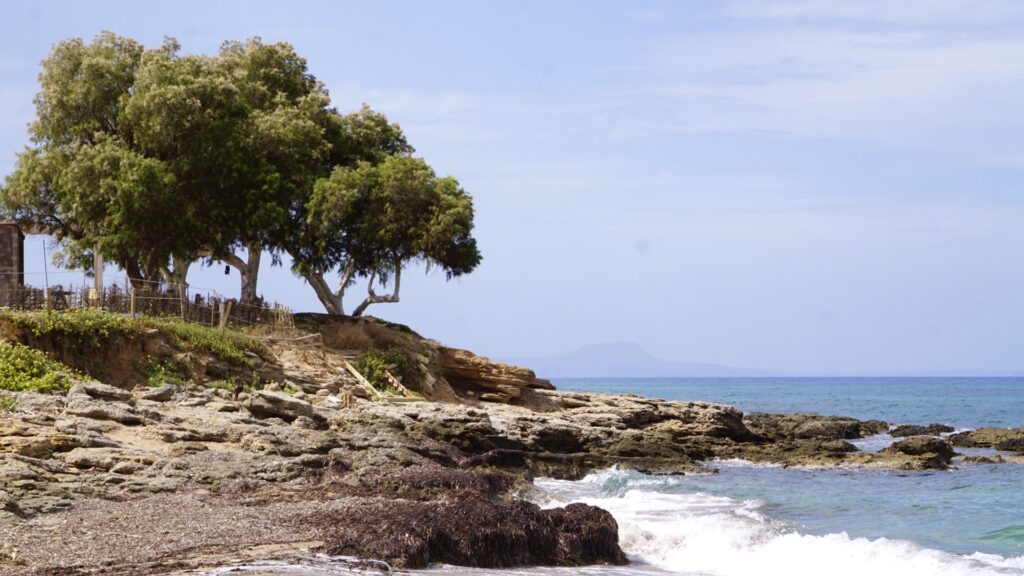
Paleohora (Palaiochora)–Sougia Coastal Walk
Best for grand coastal views
14.5km (9 miles) one-way, 6 hours, moderate
This coastal Crete hiking route begins in the popular port town of Paleohora (Palaiochora) and ends in Sougia, another popular old fishing village. In between, the trail follows the coastal cliffs for much of its route, and the views from the high points take in much of the coastline. The trail also dips down to several isolated beaches, where clothes are rare but the natural beauty is boundless – perfect for cooling off from your exertions.
For the latter third of the trail, a small pine forest offers scented shade. Some 3.5km (2.2 miles) before Sougia you’ll pass through Lissos, an Ancient Greek archeological site with ruins dating from the 2nd century BCE to 900 CE.
Other than the brief respite of the pine trees, the walk has little shade and no sources of water, so bring plenty. Paleohora is easily reached by bus and ferry, and it has good tavernas and places to stay. Sougia is quieter but is also a fine place to stay and has ferry and bus services.
As well as established Crete hiking routes, most coastal towns have trails leading to other coastal towns – always ask for options wherever you stay. For urban walks, you’ll find the old towns of Hania and Rethymno offer superb opportunities to explore enticing old lanes, taverna-filled squares, soaring fortresses and piers jutting out into turquoise seas.
Based on materials of Ryan Ver Berkmoes, Lonely Planet
See more news about health and active leisure on our channels:FB Inst

